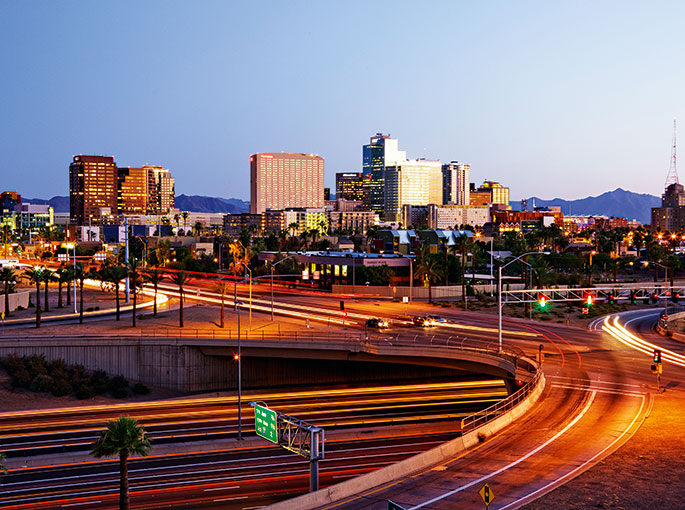
Author: Chris Camacho, President & CEO, Greater Phoenix Economic Council
Top 5
With a six-hour drive to Los Angeles and less than a four-hour drive to the US-Mexico border, Arizona provides companies with access to the world’s eighth-largest economy, California, without having to pay for California. The nation’s sixth-most populous city, Phoenix, is perfectly situated to offer a competitive, low-cost operating environment, featuring a young, diverse market, rich in talent and emerging industries.
A strong base
Building on legacy industries that have anchored the region for decades – including aerospace and defence, plus the fourth-largest semiconductor and electronics industry in the US – there is an emergence of innovative, tech-based companies that are driving growth in the new era. The information and communication technology sector is accelerating, and employment growth in the software industry is projected to outpace that in all other markets in the Mountain West region, including Denver and Austin, over the next five years.
Currently at 4.4 million, the Greater Phoenix population is expected to grow more than 20 percent within the next two decades
Currently at 4.4 million, the Greater Phoenix population is expected to grow more than 20 percent within the next two decades. And, as the nation’s sixth-youngest market, it has a higher percentage of millennials working in financial services, IT and healthcare than most major metropolitan areas, including New York, Denver and Seattle.
Feeding the talent pipeline, Greater Phoenix has two of the largest higher education institutions in the US. Arizona State University provides a skilled, diverse workforce, with a student population of 86,000, with 70 percent of those students remaining in the state post-graduation. Additionally, the Maricopa County Community College District trains and prepares more than 260,000 students, with a variety of two-year technical and career-ready programmes on offer.
Major employers such as Intel, General Dynamics, Apple and Avnet, and international companies like Henkel, Siemens and SAP, are taking advantage of the abundance of talent and the region’s competitive operating environment. With operating costs up to 40 percent lower than in California, aggressive tax credits, and incentives and programmes designed to increase access to capital, Greater Phoenix has become one of the US’ most robust and pro-business metropolitan regions.
Abundant access
Featuring more than 100 public and private airports, including Phoenix Sky Harbour International Airport – which offers more than 1,200 domestic and international flights daily – the Greater Phoenix region is well-positioned to service California and the south-west. Major highway and railway systems provide additional access.
Dedication from the region’s leaders, such as the commitment to transportation from Phoenix Mayor Greg Stanton, has provided a robust infrastructure, including a $1.3bn Metro system. And, with one of the nation’s lowest weekly work and commute times for a major metropolitan region, residents of Greater Phoenix are able to spend time enjoying our incredible communities.
People visiting the market for the first time are welcomed by the vibrancy that exists within the cities and towns that make up the Greater Phoenix region. All across the valley, residents and visitors are able to explore a strong arts culture, festivals and music concerts, numerous outdoor activities and a world-class food scene – from food trucks to five-star dining. Home to much more than a thriving business environment and a deep talent base, Greater Phoenix is the place to live, work and play.

